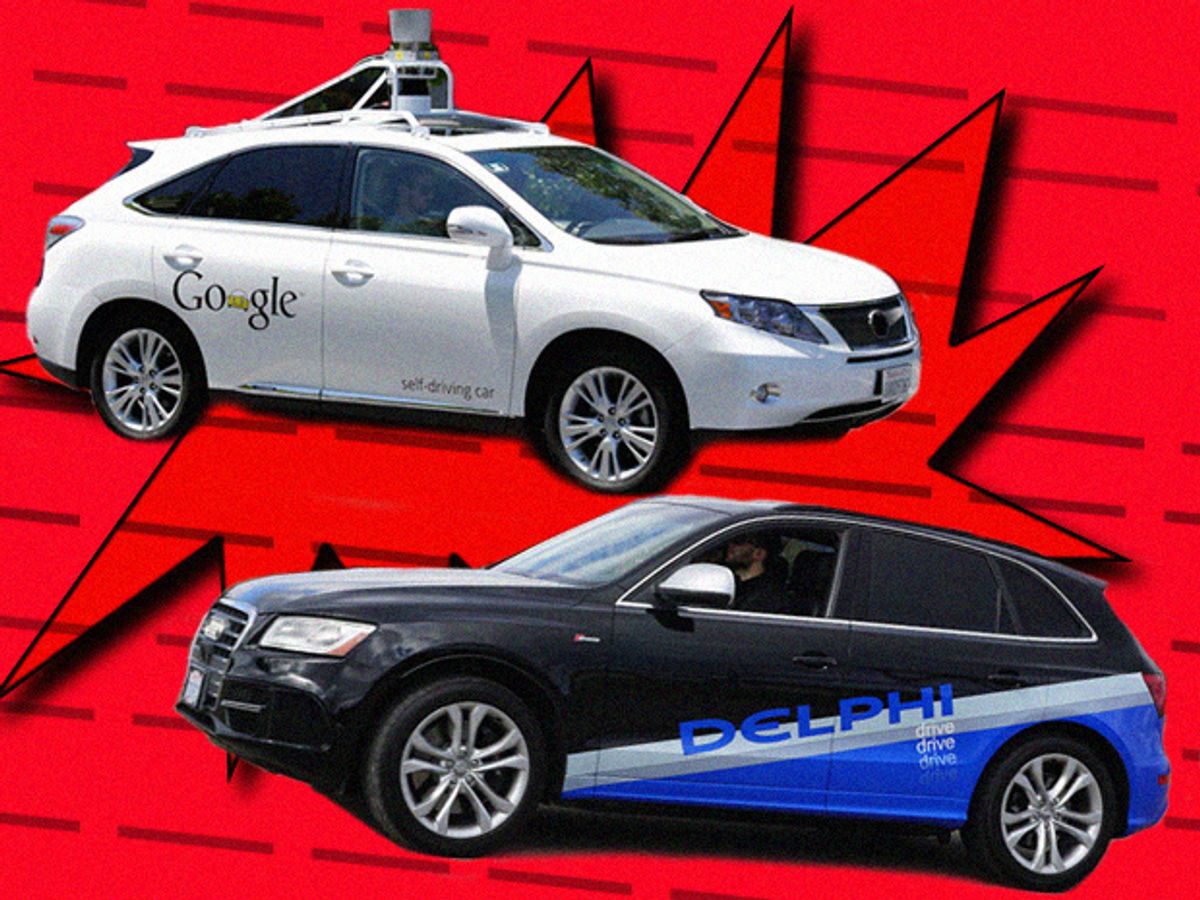A Google self-driving car and a Delphi self-driving car recently had a close encounter of the robot kind while driving on public roads. But a lack of road rage programming meant that the Delphi robot car didn’t take offense when the Google robot car prevented its planned lane change.
The two self-driving car prototypes happened to be on the same Silicon Valley road in Palo Alto earlier this week, according to Reuters. A Delphi Audi Q5 crossover vehicle equipped with self-driving sensors and software was preparing to change lanes when a Google self-driving prototype moved into the same lane to which Delphi’s car had planned to switch. John Absmeier, global business director for Delphi’s automated driving program, who was riding as a passenger, said his company’s car took “appropriate action” to delay its lane change.
Contrary to the picture painted by the original Reuters story, which reported that it was a “close call,” a Delphi spokesperson later said that the “lane change maneuver” interaction represented one of the typical “real-world driving situations” that a vehicle might encounter. Kristen Kinley, global communications manager for the Electronics & Safety Division at Delphi, shared this statement:
It wasn’t a “close call” as described in the Reuters story. Rather it was a good example of how our car leverages complex software algorithms to assess its situation—much like a human driver would—to avoid going into a lane if another car decides to move over at the same time. Timing a merge or making a lane change is a common scenario a human driver would encounter and one where experience and intuition plays a major role, such as speed up or slow down to find an opening. This is unlike automated vehicles which need to work through a decision via a highly complex network of technology and data processing to calculate the correct move. Our car did exactly what it was supposed to.
The Google self-driving car was one of the Lexus RX400h crossover prototypes that the technology giant has been testing for a while. This week, Google also introduced its custom-built, self-driving car prototype to testing on public roads and created a website for human drivers to share their experiences with encountering self-driving cars.
Google’s self-driving cars have have been involved in a smattering of road accidents involving cars driven by humans, but the self-driving cars were never at fault in any of those cases. If the recent road encounter between the two rival robot cars is any indication, they’ll generally do just fine driving alongside one another in the future.
Tekla Perry contributed reporting to this story.
Jeremy Hsu has been working as a science and technology journalist in New York City since 2008. He has written on subjects as diverse as supercomputing and wearable electronics for IEEE Spectrum. When he’s not trying to wrap his head around the latest quantum computing news for Spectrum, he also contributes to a variety of publications such as Scientific American, Discover, Popular Science, and others. He is a graduate of New York University’s Science, Health & Environmental Reporting Program.



